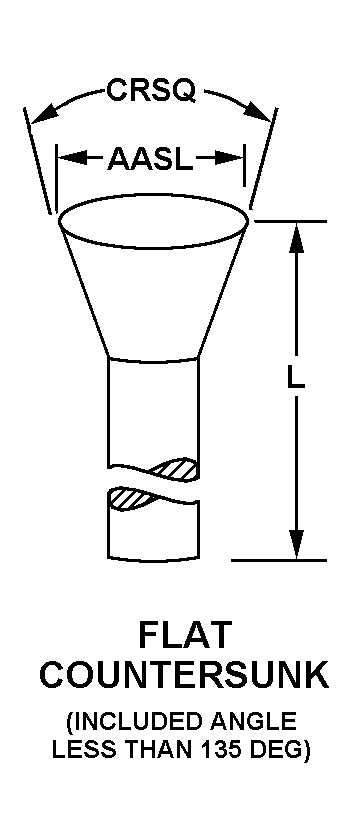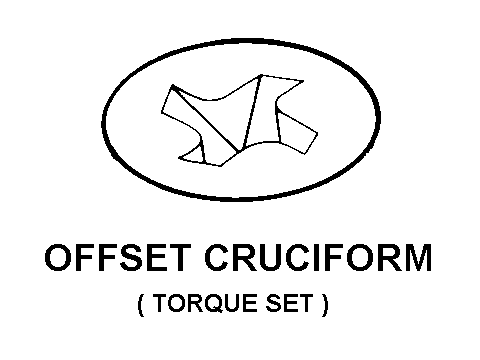5305013901873
Price Quote Get an up to date pricing and availability quote for this product. Order online or over the phone.
Quality Commitment
Serving our customers with quality and safety first.
- AS9120 Certified
- Audited supply chain
- ITAR Registered
- DDTC Registered
- HAZMAT Certified
- Customer service objectives
- Every product 100% inspected

5305-01-390-1873 Specification Set by the OEM (see RNCC code 3)
3a
RIGHT-Hand
0.338in. ⁓11/32"
1.573in. and 1.703in. ⁓1-45/64"
flat countersunk
0.2516in.
0.1885in. and 0.1895in.
offset cruciform (torque set)
0.190in. (UTS #10)
1.240in. and 1.260in.
32
99.0 degrees and 101.0 degrees
iron alloy 660
ams 5731 assn std single material response or ams 5737 assn std single material response
passivate
QQ-P-35 fed spec single treatment response
unjc
80205-NAS1993 professional/industrial association standard
Cross Reference Parts Part numbers that meet the specification outlined on this page and set by the OEM
Identification Item Identification Guide (IIG) and Item Name Code (INC)


Definition Definition of approved item name (AIN): "SCREW,CLOSE TOLERANCE"
A screw, machine or screw, cap, socket head whose unthreaded portion is of specified grip length, plated or unplated, and is machined to a tolerance of one thousandth (0.001 in.) (0.025 mm) or less of a specific diameter for items (1.000 in.) (25 mm) or less in diameter. Items over (1.000 in.) (25 mm) in diameter shall have a tolerance of fifteen ten thousandths (0.0015 in.) (0.038 mm) or less. The nominal major diameter of the threads shall be at least one thousandth (0.001 in.) (0.025 mm) below the minimum shank diameter, but not below the minimum major diameter for applicable class of fit, as shown in the screw thread standards, fed std h28 and/or other nationally recognized standards. The head is designed to be held or driven with an inserted driver. It is not designed for rotation by the thumb and fingers. A locking feature may be incorporated in the design of the head or threads.
5305-01-390-1873 Material Hazmat, Precious Metals, Criticality, Enviroment, and ESD
Indicates there is no data in the hmirs and the nsn is in a fsc not generally suspected of containing hazardous materials.
Item does not contain precious metal.
Represents items with no adp components
The item does not have a nuclear hardened feature or any other critical feature such as tolerance, fit restriction or application.
Identification Codes
HMIC: Hazardous Material Indicator Code. A one position code that identifies a hazardous item.
PMIC: Precious Metal Indicator Code. A one position code which identifies items that have precious metals as part of their content. precious metals are those metals generally considered to be uncommon, highly valuable, and relatively superior in certain properties such as resistance to corrosion and electrical conductivity.
ESD: Electrostatic Discharge. Indicates if an item is susceptible to electrostatic discharge or electromagnetic interference damage. electrostatic discharge damage occurs when an accumulation of static electricity generated by the relative motion or separation of materials is released to another item by direct contact. electromagnetic interference damage occurs when an item comes into proximity with an electrostatic or magnetic field.
ENAC: Enviromental Attribute Code. Identifies items with environmentally preferred characteristics.
CRITL: Criticality Indicator Code. Indicates an item is technically critical by tolerance, fit, application, nuclear hardness properties, or other characteristics.
Material Management Material categorization and source of supply
Defense logistics agency, enterprise business systems
Brac mmac for oc-alc
Material Codes
SOS: Source of Supply. A three position code or routing identifier code (ric), which identifies the source of supply activity.
SMIC: Special Material Indicator Code. A two position code, which categorizes material on the basis of requirements for source or quality control, technical design or configuration control, procurement, stocking and issue control, special receipt, inspection, testing, storage, or handling.
MMAC: Material Management Aggregation Code. A two position code that identifies an item of supply to be managed by a specific activity manager.
MCC: Material Echelon Code. A two position code employed by the marine corps in classifying items into categories by materiel category and procurement echelon. the alphanumeric management code is in the first position and identifies the materiel category
IMC: Denotes wether items shall be subjected to integrated management under the defense supply agency or retained by the individual military service or other department of defense components for their management. Assigned by th activity responsible for item management coding.






